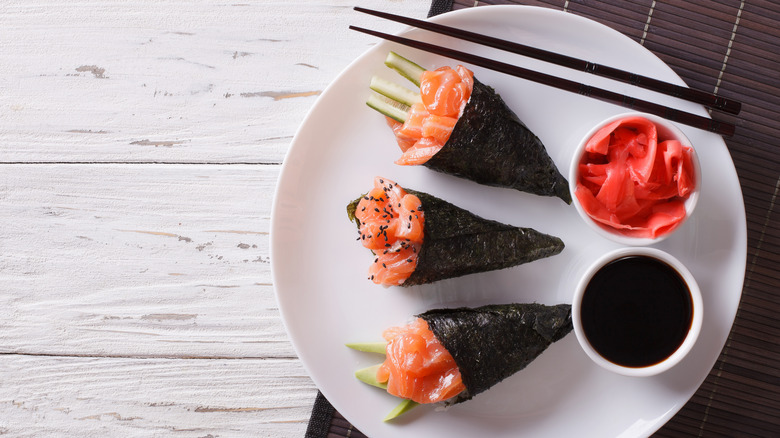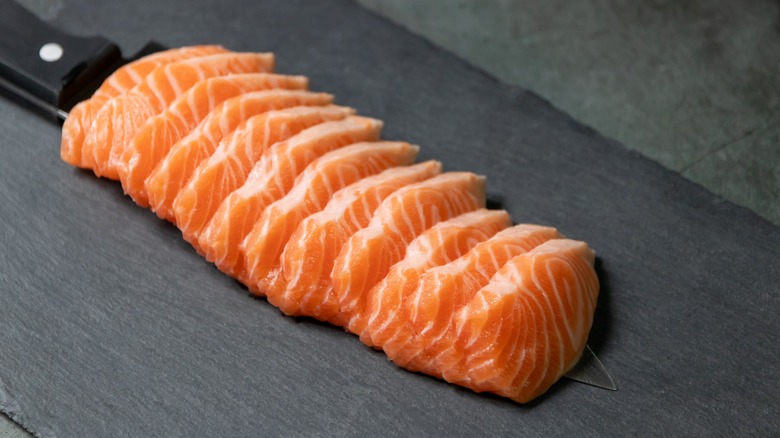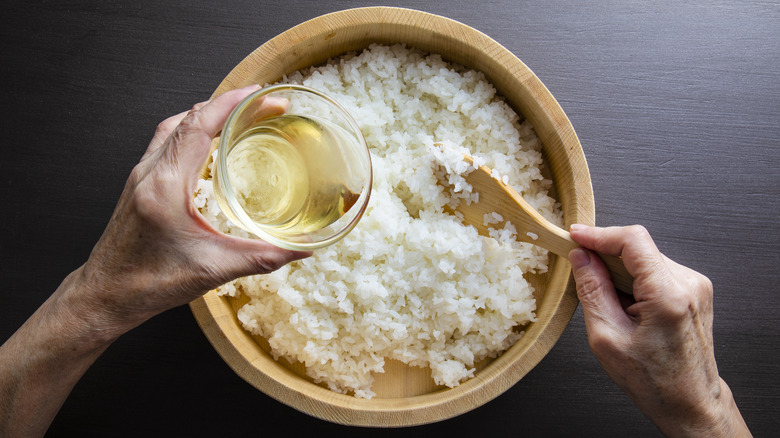The Biggest Mistake You're Making With Homemade Temaki
The hand roll, or temaki, is a staple for any sushi lover. While most Japanese people typically don't make sushi at home — preferring to leave it to the masters and enjoy it as a meal out — temaki is an exception to the rule. Not only does it make for a delicious and fun family meal, but it's an easy, flavorful entry point for those who want to start making sushi at home. However, there's a careful art to preparing temaki, and it's easy to make some common missteps.
Japanese cooking is often an exercise in restraint and simplicity — and this is where many new to temaki-making tend to slip up. That's what we learned when we talked to chef Shingo Akikuni of the Michelin-starred omakase restaurant Shingo in Miami, Florida.
"You never want to overload a temaki," he told us. "[I]t will result in soggy seaweed and will be difficult to eat if it's too big." It's an easy mistake to make — after all, who doesn't want to cram their hand roll full of delicious ingredients? But for the best temaki, remember the golden rule of Japanese food: less is more!
How to build a delicious temaki
When it comes to constructing your temaki, over-stuffing isn't the only thing to watch out for. There's a method to building a delicious hand roll, and fortunately, it's as simple as can be. According to chef Shingo Akikuni, "Temaki always should have seaweed, then rice as a base, wasabi on the rice, fish, then sauce on the fish." It really is that straightforward. When you've got the right building blocks, you don't need to overload your hand roll with ingredients to achieve a truly delightful result. The flavors of each component are the most important thing.
When it comes to choosing those flavors, chef Akikuni believes "people should go with whatever they like best." Whether that means traditional sushi fillings like salmon, cucumber, or fatty tuna with a soy-based sauce — or something as luxurious as deep-fried soft-shell crab — the only requirement is that you enjoy it!
"I always like to keep it simple, use great ingredients, and let the flavors speak for themselves," Akikuni told us. "A great fish, great rice, great sauce, fresh wasabi, and good seaweed will always be a delicious combination."
How to source the best ingredients for your temaki
Because of the simplicity of hand rolls, using quality ingredients is essential — that means fresh fish, perfectly cooked rice (if you don't have sushi rice, look for substitutions; other short-grained varieties like bomba or Arborio can work well), and great seaweed. When it comes to nori — sheets of dried seaweed made specifically for sushi — finding the right type is crucial. Luckily, it's as simple as visiting your local Asian grocery store. "Go to an Asian market," chef Shingo Akikuni advised. "[T]hey will usually have seaweed specifically for making temaki!"
As for sauces, there are plenty of unique combinations you can try, from a nutty black sesame dressing to a spicy three-ingredient bang bang sauce made with sriracha, sweet chili, and mayonnaise. For chef Akikuni, simplicity is best: "Good soy sauce (dashi soy sauce has great depth of flavor) and fresh wasabi" are his go-tos — proof that when it comes to sushi, letting the natural flavors of your ingredients shine is truly the way to go!



